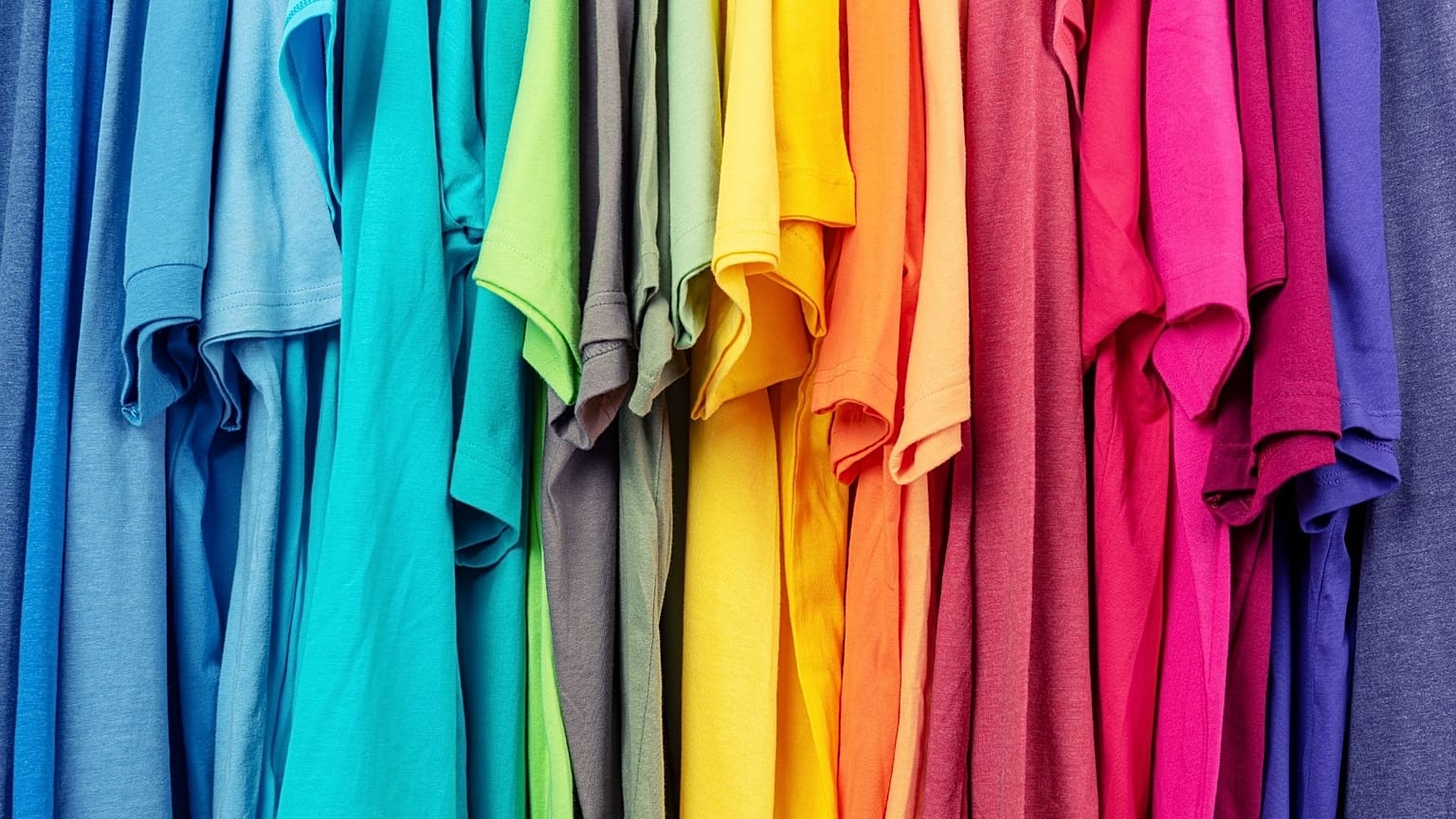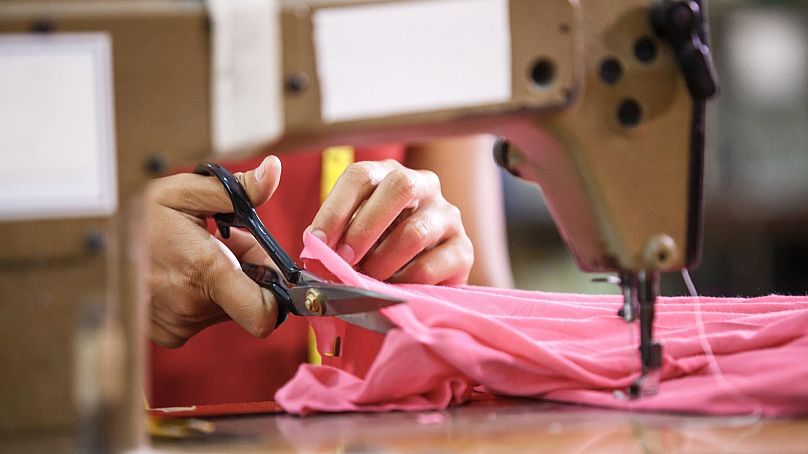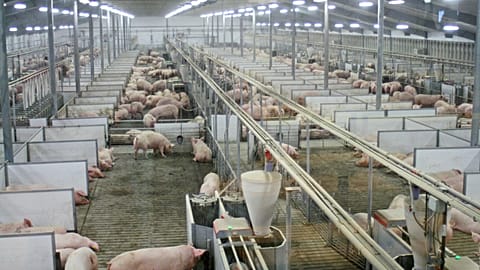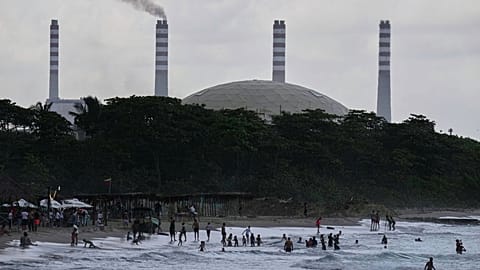If the world wants to meet its COP26 climate goals, the fashion industry must change its colours fast.
Dr Alan Hudd is a materials scientist and industrial inkjet expert with over 250 patents to his name. In 2014, Alan founded Alchemie Technology with a mission to revolutionise the way our clothes are produced by cutting pollution out of the dyeing process.
At the United Nations Climate Change Conference, COP26, in November 2021, close to 200 countries agreed to urgent cuts to greenhouse gas emissions, to keep 1.5 degrees within reach and to achieve net zero by 2050.
In order to do this, there must be systemic change across global industry, but some industries bear more responsibility than others.
The fashion industry is one of the most polluting in the world. It uses huge amounts of energy and water (an estimated 93 billion cubic metres a year) and generates up to ten percent of global CO2 emissions.
Apparel consumption is set to rise by 63 per cent to 102 million tons a year in 2030, according to a 2017 Pulse of the Fashion Industry report. So without urgent action the problem is only going to get worse.
However, the cause of the problem could also be the solution. Due to the quick production methods of the fashion industry, the sector is capable of making significant and rapid improvements, which could help to solve the climate crisis.
It is one of the largest contributors to the problem but also has the potential to drastically cut carbon emissions.
Problems within the fashion industry
When thinking about sustainability and corporate responsibility in fashion, many people think about sweatshops. This is, of course, an important issue and one that has been the focus of investigations and exposés. . The Leicester clothing scandal and the collapse of a factory in Bangladesh in 2013 sadly still loom large in all our minds.
Recycling is the other standout issue, which many countries have been attempting to tackle for over a decade. Upcycling old clothes, using recycled materials and repurposing outdated, unworn garments all help to make important positive contributions.
However, there is one source of environmental damage from textiles that is too often overlooked - the traditional dyeing process. Most of our clothes are still coloured using industrial dye and chemical baths, which have barely changed in centuries.
How industrial dyes poison our planet
Within the fashion and textile sector, the single worst contributor to climate change is dyeing and finishing – the processes by which colour and other chemicals are applied to fabrics. These are some of the most polluting industrial processes in the world.
Dyeing and finishing are responsible for 3 per cent of global CO2 emissions (predicted to increase to more than 10 per cent by 2050). That is more than the CO2 produced by shipping and aviation combined. It also causes over 20 per cent of global water pollution.
The wastewater produced by dyeing pollutes the water table, getting into rivers and oceans. It is also used to irrigate fields. This is a major problem in countries which still dominate the dyeing industry like China, Bangladesh, Thailand and Indonesia.
Dyeing and finishing can also be a dangerous sector to work in. In early January 2022, six workers at a dyeing plant in India were killed after inhaling toxic gas caused by an illegal dump of waste chemicals.
Making manufacturing more sustainable
My company, Alchemie Technology, based in Cambridge, is one of the clean tech firms determined to make a difference and introduce more sustainable manufacturing processes to the fashion industry.
Our digital dyeing EndeavourTM machine, which produces no wastewater and reduces energy consumption by 85 per cent compared to traditional dyeing, is now in production.
We have just shipped a machine to Taiwan, where it will form the centrepiece of a new Alchemie demo hub and showroom in Asia. Taiwan is a country committed to low carbon emissions and environmentally friendly manufacturing solutions.
Our aim is to kickstart a sustainable dyeing revolution in the region – and encourage more brands and manufacturers to come on board.
We are not alone in trying to drive change. Alchemie recently joined the D(R)YE Factory of the Future Project, launched by Fashion For Good to accelerate the shift from wet to dry processing in the textile supply chain. A report will be published later this year detailing the difference that innovations in textile pre-treatment and colouration can make to emission reduction and water consumption.
How the fashion industry can meet its COP26 pledges
Many countries are already making great progress towards more sustainable textile solutions. In Bangladesh, the government has brought in legislation requiring factories to install water treatment plants. In China, the government has been coming down hard on high-polluting textile factories.
However, if the COP26 pledges are to be met, consumers, brands and their manufacturers need to work together and demand that clothes are produced in less harmful ways. Government support and legislation is also required if we are to transition from wet to dry dyeing.
No single country or company can drive change alone. The entire supply chain must work in tandem to reduce energy use and stop polluted water being dumped into rivers.
This way the fashion industry can make its contribution to the pledges made at COP 26 and move away from being a polluter of the environment to a sustainable future.




















